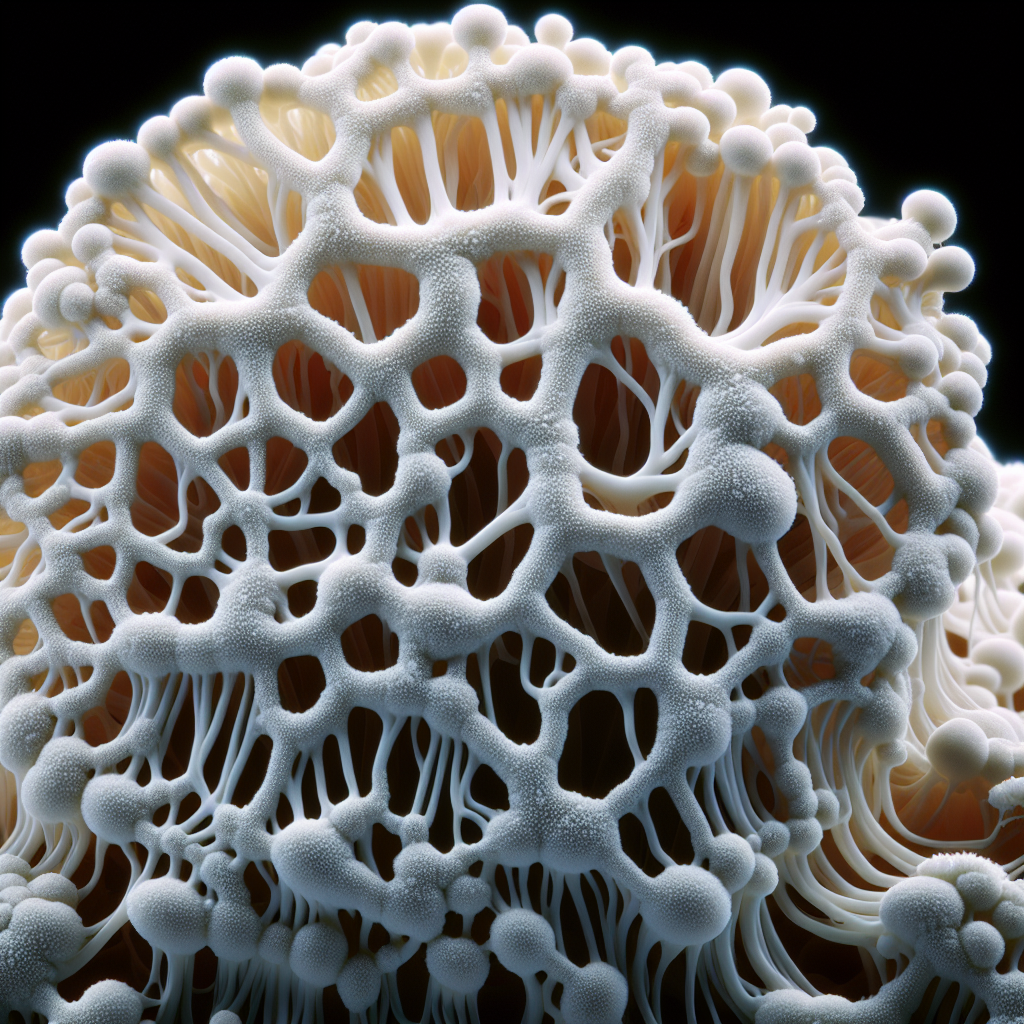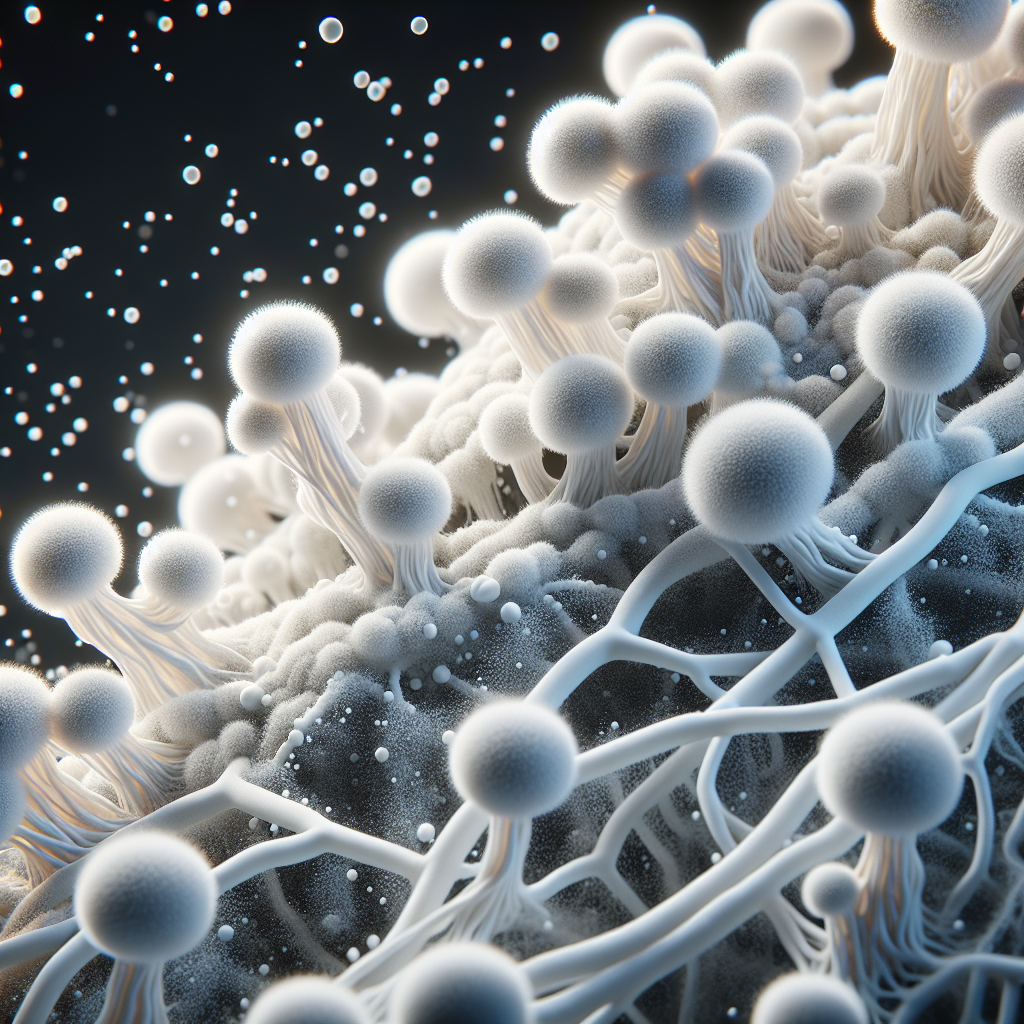Navigating the intricate world of fungi, your focus hones in on mycelium and the threats it encounters, including the destructive intrusion of white mold. The report “Understanding the effects of white mold on mycelium” offers enlightening insights about this critical issue prevalent in fungal cultivation. Within its scope, the article explores the catalysts behind white mold’s infection and elucidates its detrimental impact on the mycelium’s growth and functionality. A journey rooted in scientific examination awaits you to comprehend this fascinating interplay between mycelium and white mold.

Definition of White Mold and Mycelium
Understanding the relationship between white mold and mycelium can provide insights that may be instrumental in the management of fungi in various industries or even in natural ecosystems.
Understanding White Mold
White mold, also known as sclerotinia, is a fungus that is notorious for its potentially destructive effects. This mold type is characterized by its cottony and fluffy appearance, often manifesting in a distinct white color. White mold possesses the ability to infect a wide variety of plants, making it an issue of concern in agricultural and horticultural contexts. The spores produced by white mold are responsible for its ubiquity and hardiness in diverse environments.
Understanding Mycelium
Mycelium, on the other hand, refers to the vegetative part of a fungus consisting of a mass of branching filamentous hyphae. It serves as the fungus’s primary means for water and nutrient absorption. The presence of mycelium in an ecosystem suggests a thriving and diverse soil life and can contribute towards soil structure and fertility.
What is White Mold on Mycelium?
White mold on mycelium refers to the infection of fungal webs (mycelium) by the white mold. This is notable because mycelium is usually associated with beneficial processes like nutrient recycling in nature and decomposition of organic materials. When white mold grows on the mycelium network, it can have profound impacts on both the mycelium’s function and the broader ecosystem.
The Life Cycle of White Mold
To fully understand the potential effect of white mold on mycelium, it is important to understand its lifecycle.
Growth and Development of White Mold
White mold undergoes several stages of growth and development. It starts as a small, white growth on decaying plant material. As the mold grows and matures, it begins to produce spores which are spread by air currents, water, or even animals.
Reproduction of White Mold
The reproduction period of white mold is typically characterized by the production of spores. These spores can be viable for long periods, and when conditions are suitable, they can germinate and infect new hosts, thus ensuring the continued survival and spread of the white mold.
Survival and Dormancy
White mold is a hardy organism that is capable of surviving in both active and dormant states. During unfavorable conditions, it enters a dormancy phase where it conserves resources. With the return of suitable conditions, the white mold can re-emerge, growing and spreading swiftly.
Factors Influencing White Mold Growth on Mycelium
A number of conditions can predispose the mycelium to infection by white mold.
Effect of Environmental Conditions
Environmental conditions play a significant role in the susceptibility of mycelium to white mold infection. High moisture conditions, coupled with moderate temperatures, are particularly conducive to the growth of white mold.
Impact of Nutrient Availability
The availability of nutrients can also significantly influence the growth of white mold. High nutrient availability facilitates rapid growth and spread of the mold.
Role of Mycelium Species
The susceptibility of mycelium to white mold can also be influenced by the species of the mycelium. Some species are more resistant to mold infection than others.
Symptoms of White Mold Infection on Mycelium
Identifying white mold infection in mycelium can be challenging. However, there are several signs that may indicate infection.
Visual Indicators
The most obvious sign of white mold infection is often a visible, cottony white growth. This is usually seen on or near the infected mycelium.
Changes in Growth Patterns
The presence of white mold can significantly affect the growth patterns of mycelium. This can include retarded growth, shrinkage, or even the death of the mycelium.
Effects on Mycelium Structure
White mold infection could also translate to changes in the mycelium structure. These could manifest as deformities or weakening, inhibiting its normal functioning.

Implications to Mycelium Health
The presence of white mold on mycelium can have profound effects on the health of the mycelium itself.
Impaired Nutrient Uptake
White mold infections can disrupt the nutrient uptake process of mycelium, limiting its capacity to absorb and transport nutrients effectively.
Reduced Mycelium Yield
An Infestation of white mold can significantly reduce the overall yield of mycelium. This may be due to reduced growth rates or premature death caused by the infestation.
Degradation of Mycelium Quality
White mold can also lead to a reduction in the quality of mycelium, affecting its structure integrity and ability to facilitate nutrient absorption and water retention in the soil.
Ecological Impact of White Mold on Mycelium
The effect of white mold on mycelium does not only impact the mycelium itself, but has far-reaching ecological implications as well.
Impact on Soil Ecosystem
Mycelium plays a pivotal role in the soil ecosystem, aiding in nutrient recycling and structuring of the soil. Hence, damage to mycelium by white mold could potentially disrupt these crucial processes.
Effect on Interactions with Other Organisms
Mycelium forms mutualistic relationships with various organisms in its ecosystem, including plants and certain types of bacteria. Damage to the mycelium network caused by white mold may detract from these beneficial interactions.
Changes in Biochemical Cycling
Mycelium plays a vital role in the biochemical cycling process, particularly in the carbon cycle. Therefore, damage to mycelium from white mold can potentially disrupt these processes, with implications for the ecosystem as a whole.
Methods of White Mold Detection on Mycelium
Early detection of white mold on mycelium is critical for effective management of the infection.
Visual Inspection
Through a careful observation or visual inspection, the early signs of a white mold infection, such as the presence of a cottony, white growth, can be detected.
Use of Fungal Identification Techniques
Fungal identification techniques, such as microscopy or culturing, can be employed to definitively confirm the presence and identity of the white mold.
DNA-based Molecular Methods
Newer detection techniques, like DNA-based molecular methods, offer even greater specificity and speed in detecting white mold in mycelium, even at very early stages of infection.
Prevention and Control of White Mold on Mycelium
There are several methods which can be used to prevent or control the growth of white mold on mycelium.
Cultural Practices
Cultural practices, such as maintaining favorable growing conditions and proper cleaning and sterilization methods, can help prevent the onset and spread of white mold.
Use of Fungicides
Commercial fungicides may also be used to control white mold, particularly in situations where cultural control methods are insufficient or not entirely effective.
Biological Control Methods
Biological control methods, which involve the use of other organisms to control the white mold, are another potential approach, offering a more sustainable and ecologically-friendly alternative to chemical fungicides.
Future Research Directions
Research on white mold and mycelium is continuously evolving, exploring new frontiers in science and technology.
Strategies for White Mold Resistance
There is ongoing research into strategies for enhancing the resistance of mycelium to white mold. This involves understanding the genetic and biochemical pathways involved in resistance and looking at how these could be enhanced.
Genetic Modification of Mycelium
Another area of research focuses on the genetic modification of mycelium, with the aim of making it more resistant to white mold and improving its overall health and productivity.
Developing Superior Fungicides
Research is also being carried out to develop superior fungicides, with higher efficacy, better delivery systems and lower environmental impact.
Conclusion
The encounter between white mold and mycelium is emblematic of the struggles faced by fungi in their quest for survival. White mold poses a significant threat to the health and functionality of mycelium, disrupting vital functions, and having potentially lasting implications for broader ecosystems.
Summary of Effects of White Mold on Mycelium
White mold influences the growth patterns, structure, nutrient absorption and yield of mycelium, often leading to detrimental effects to the health and productivity of the fungal network.
Steps towards Effective Management
Prevention and control measures, such as pursuing good cultural practices, utilizing fungicides, and leveraging biological control options can offer a lifeline in managing white mold’s desecration of mycelium. Furthermore, the role of innovative mold detecting techniques cannot be underestimated.
Future Implications
With ongoing research latching onto strategies that enhance white mold resistance, genetic modification of mycelium, and development of superior fungicides, all is not lost. With these concerted efforts, we can hope to effectively counter the threat of white mold to mycelium and preserve the vitality of our natural and artificial ecosystems.
Hence, a comprehensive understanding of the effects of white mold on mycelium is crucial to informing these efforts, and to securing a future where mycelium can thrive, unburdened by the debilitating effects of white mold.
